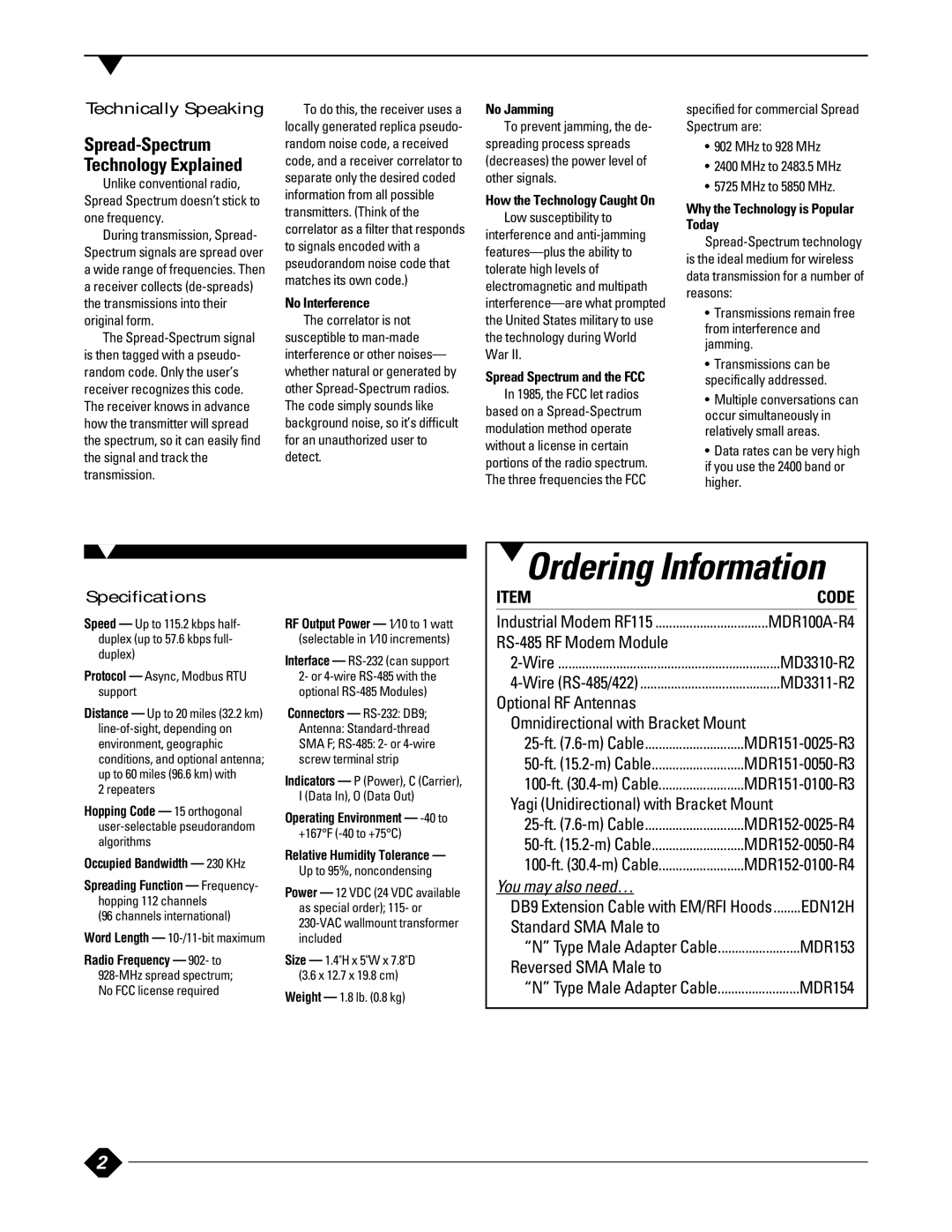
Technically Speaking
Spread-Spectrum Technology Explained
Unlike conventional radio, Spread Spectrum doesn’t stick to one frequency.
During transmission, Spread- Spectrum signals are spread over a wide range of frequencies. Then a receiver collects
The
To do this, the receiver uses a locally generated replica pseudo- random noise code, a received code, and a receiver correlator to separate only the desired coded information from all possible transmitters. (Think of the correlator as a filter that responds to signals encoded with a pseudorandom noise code that matches its own code.)
No Interference
The correlator is not susceptible to
No Jamming
To prevent jamming, the de- spreading process spreads (decreases) the power level of other signals.
How the Technology Caught On
Low susceptibility to interference and
Spread Spectrum and the FCC
In 1985, the FCC let radios based on a
specified for commercial Spread Spectrum are:
•902 MHz to 928 MHz
•2400 MHz to 2483.5 MHz
•5725 MHz to 5850 MHz.
Why the Technology is Popular Today
•Transmissions remain free from interference and jamming.
•Transmissions can be specifically addressed.
•Multiple conversations can occur simultaneously in relatively small areas.
•Data rates can be very high if you use the 2400 band or higher.
Specifications
Speed — Up to 115.2 kbps half- duplex (up to 57.6 kbps full- duplex)
Protocol — Async, Modbus RTU support
Distance — Up to 20 miles (32.2 km)
2 repeaters
Hopping Code — 15 orthogonal
Occupied Bandwidth — 230 KHz
Spreading Function — Frequency- hopping 112 channels
(96 channels international)
Word Length — 10-/11-bit maximum
Radio Frequency — 902- to
RF Output Power — 1⁄10 to 1 watt (selectable in 1⁄10 increments)
Interface —
Connectors —
Indicators — P (Power), C (Carrier), I (Data In), O (Data Out)
Operating Environment —
Relative Humidity Tolerance —
Up to 95%, noncondensing
Power — 12 VDC (24 VDC available as special order); 115- or
Size — 1.4"H x 5"W x 7.8"D (3.6 x 12.7 x 19.8 cm)
Weight — 1.8 lb. (0.8 kg)
Ordering Information
ITEM |
| CODE |
Industrial Modem RF115 | ||
|
| |
Optional RF Antennas |
|
|
Omnidirectional with Bracket Mount |
| |
Yagi (Unidirectional) with Bracket Mount |
| |
You may also need… |
|
|
DB9 Extension Cable with EM/RFI Hoods | ........EDN12H | |
Standard SMA Male to |
|
|
“N” Type Male Adapter Cable | MDR153 | |
Reversed SMA Male to |
|
|
“N” Type Male Adapter Cable | MDR154 | |
2
